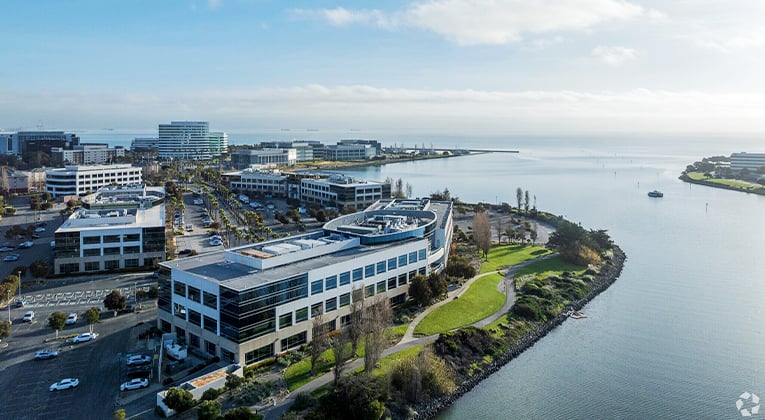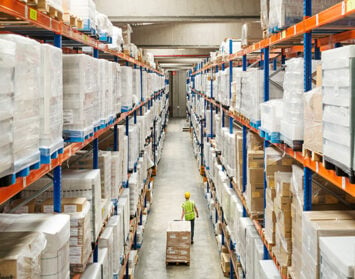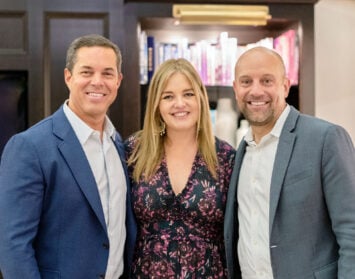Over two years ago, Hughes Marino had forecast that a perfect storm was on the horizon for The Bay Area’s biotech wet lab market. That perfect storm would be comprised of 1) changes in the capital markets that would negatively affect demand, 2) growing wet lab sublease inventory and 3) record levels of new construction that, when combined, would lead to a historic spike in supply. From 2020-2022, the biotech industry was the standout of the U.S. capital markets, thanks to the vital role the industry played in the Covid-19 pandemic response and the unprecedented capital investment that flowed into the industry. With all of that capital, biotech companies leased millions of square feet of biotech wet lab space from 2020-2022 in an unprecedented surge that real estate developers thought would last for many years to come.
The Pendulum Swings in Less Than a Decade
South San Francisco, as the second largest commercial real estate wet lab market in the U.S.—second to Boston/Cambridge—was positioned to benefit the most from this demand spike. With established global leaders like Genentech, Amgen and Merck as well as early-stage companies like Cellares, Shinobi Therapeutics and Terremoto Biosciences, landlords thought that the South San Francisco biotech demand would be almost insatiable for many years to come. Yet what unfolded from 2020-2025 has been the most radical supply/demand swing in U.S. history, going from 2020’s tightest lab market ever, with vacancy at approximately 4% and competition between tenants over space, to now the softest in history with vacancy at approximately 32%. But how did we get here so fast, with such a radical sway in outcomes?
2023 Capital Market Changes Cool Demand
Biotechnology companies are inherently expensive to launch and scale, requiring hundreds of millions of dollars from venture, strategic and IPO market investors. In 2022, when the Federal Reserve implemented its tightening policy to slow down inflation, a byproduct was the shift in the risk appetite of investors for life science companies, which caused venture firms to also back away from investing. This persisted for much longer than anyone anticipated, continuing to today, as life science companies have become capital-starved, resulting in the ceasing of operations of dozens of biotech companies locally, and the scaling down of much of the remainder. Unexpectedly, existing wet lab buildings came back to market due to lack of renewal at expiration or tenant defaults.
Sublease Inventory Further Expands Supply Through 2024
Biotech companies seeking to reduce burn rate in 2023-2024 have had quiet layoffs across the sector, and thus a reduction in the amount of space required. This excess space then came on the market for sublease, at a 20%-30% discount to what the building owner was trying to charge, and for shorter terms. A surge in supply also came from more established companies that had raised hundreds of millions of dollars each from 2020-2022. Many overcommitted to space at that time, fearing that their future lab space needs would be cut off by ongoing market shortages. Rather than leasing what they needed, companies often leased two to three times more space than their initial requirements, expecting to grow into the overage…but most never did. Much of that over-leasing has reverted onto the sublease market, which has put even more downward pressure on the wet lab market. The 2021 market had essentially no sublease space, and now there is approximately 1.2M SF on the market.
New Construction Surge Puts Final Nail in the Coffin
Between 2021 and 2024, the amount of South San Francisco wet lab space nearly doubled with 5.5M SF of new construction, bringing the total market up to 11.7M SF. Most of these new buildings were built on a speculative basis without any preleasing. There is one remaining building still under construction delivering in the coming month at 580 Dubuque Avenue, which is a 340,000 SF IQHQ venture that also has no takers. With demand turning negative since most of these new projects were conceived three years ago, developers have been left with grim prospects that this new supply will simply not be absorbed.
Other Northern California Submarkets—The Peninsula/South Bay
When we look down the San Francisco Peninsula and into the South Bay wet lab market, the same tragic story has unfolded. Wet lab vacancy between Burlingame and San Jose has reached 27%, driven by nine consecutive quarters of negative demand. Sublease availability remains more than double the five-year average at 2.8M SF. Leasing activity is heavily concentrated in renewals such as Vaxcyte’s 258,600 SF renewal and expansion, Natera’s 136,258 SF renewal in San Carlos and Impossible Foods’ 60,841 SF renewal in Redwood City—and often these companies are retaining more space than needed today. But demising the space is cost prohibitive, not physically possible or counters future growth plans.
Looking ahead to 2025-2027, the forecast for these markets remain grim for landlords and bright for tenants. Unlike South San Francisco (which nearly all of its new construction has already delivered), The Peninsula construction pipeline is still robust with 4.6M SF being delivered in 2025-2026, with only 10% preleased. This new supply will significantly outpace the anemic demand. For tenants considering San Carlos, Redwood City, Menlo Park and Palo Alto, the foreseeable market conditions are a golden opportunity to shape cost-effective, creative and flexible leasing strategies to establish a footprint in one of the world’s premier life sciences hubs, adjacent to Stanford University and the venture capital community.
A Historic Supply Crisis Leads to a Tenant Favorable Market
Never before in history have there been more landlords with more square footage of wet lab space available, not just in South San Francisco and The Peninsula, but nationwide. Now more than ever, there is an abundance of wet lab subleases available—26 in South San Francisco totaling over 1.1M SF, 36 in San Diego totaling 750,000 SF and 96 in Boston totaling 3M SF.
What can life science tenants expect in the coming years? While landlords and their landlord leasing brokers attempt to maintain the opaqueness of a market and have yet to lower asking prices, lease terms have materially softened for tenants. But not so much that tenants should try and work “direct” with landlords or through landlords’ proxy leasing brokers. In very recent months, proven by multiple life science client projects our team is advising on, landlords’ motivations are through the roof, while we are driving rents through the floor. Rental rates are off by 20%-25%, free rent is equal to a month per year of lease term and tenant improvement concession packages are whatever is required for the tenant’s build out. More importantly, with the flood of second-generation space and sublease space, tenants can now sign much more flexible commitments from 2-3 years…even on renewals…and don’t have to get tied up into long-term contracts during these times of uncertainty.









